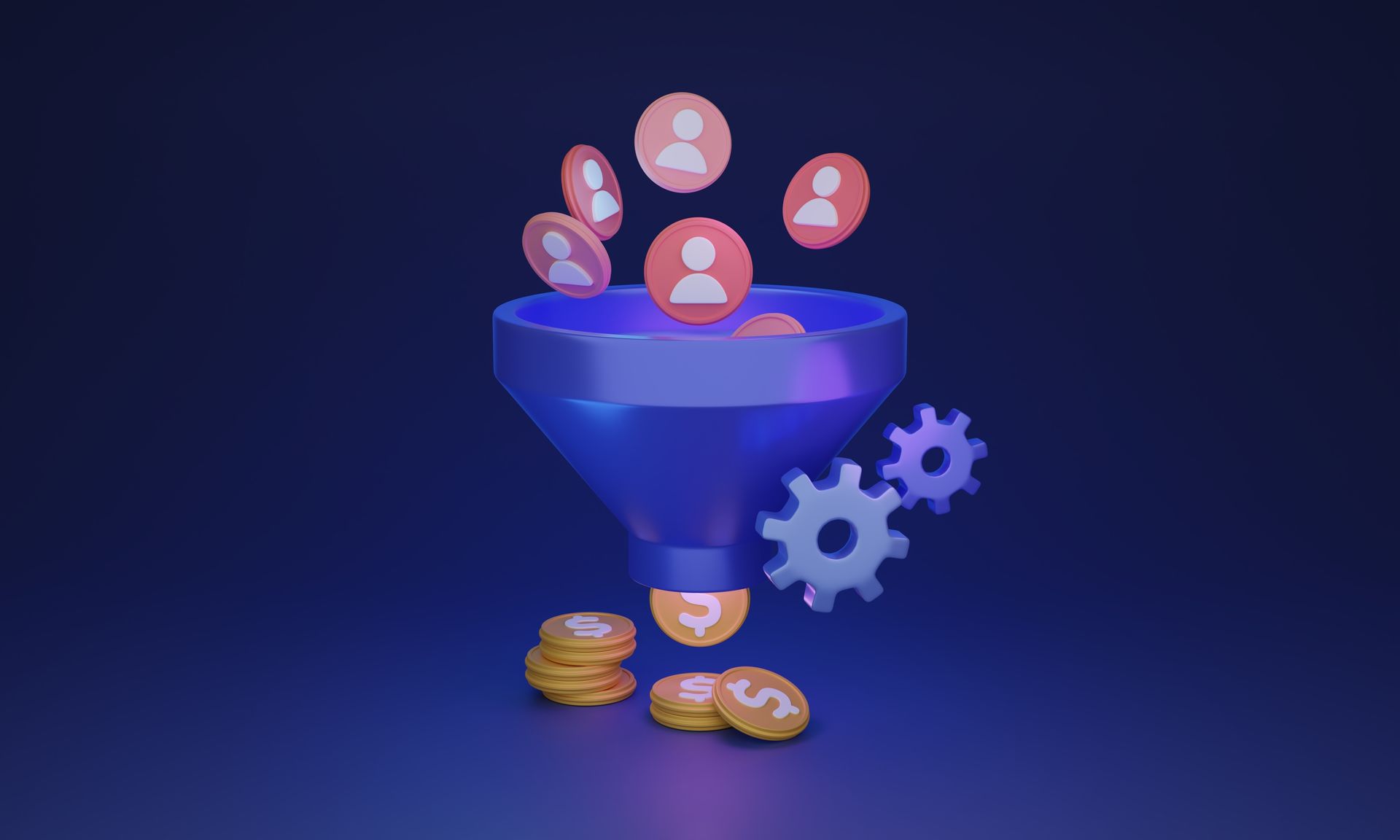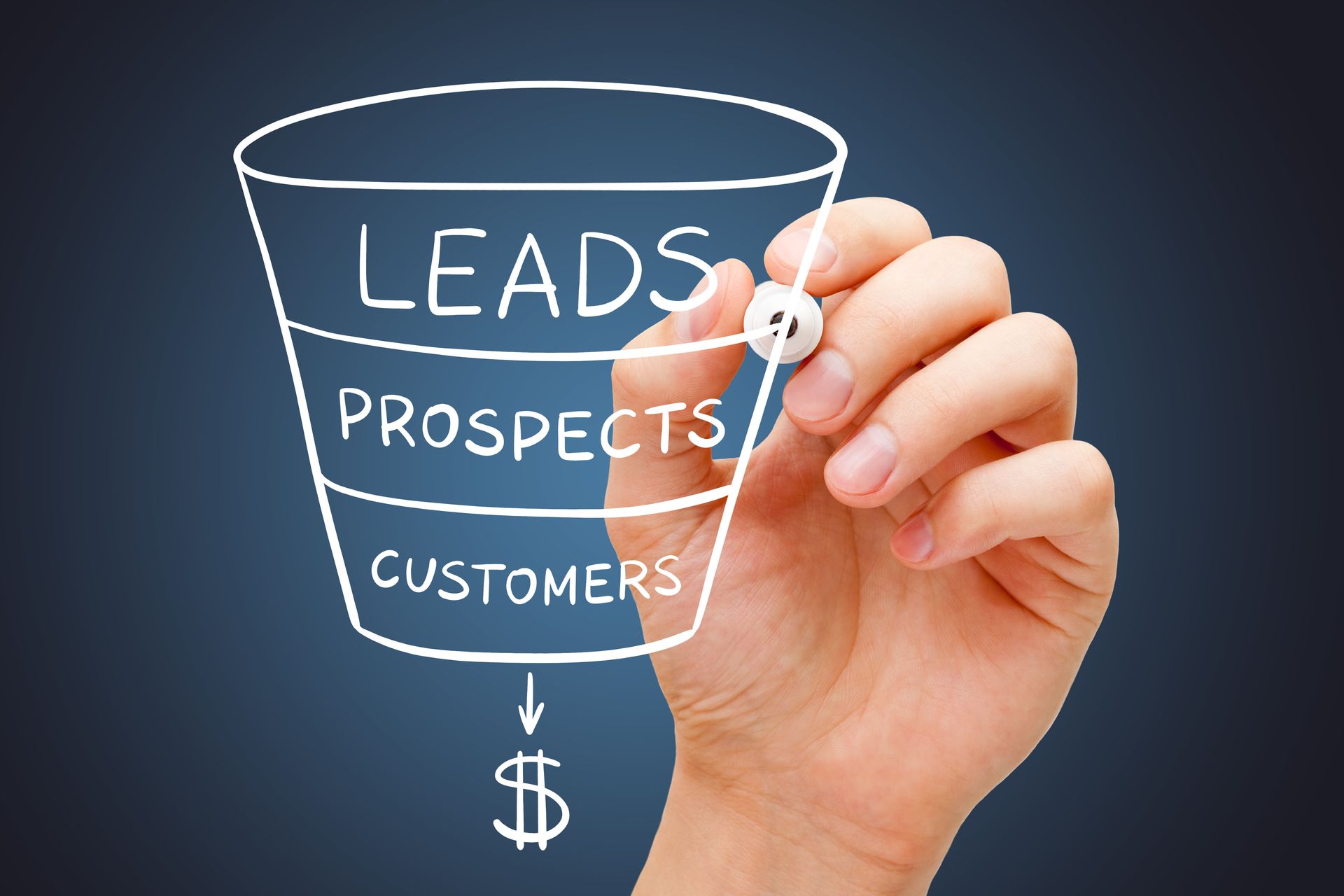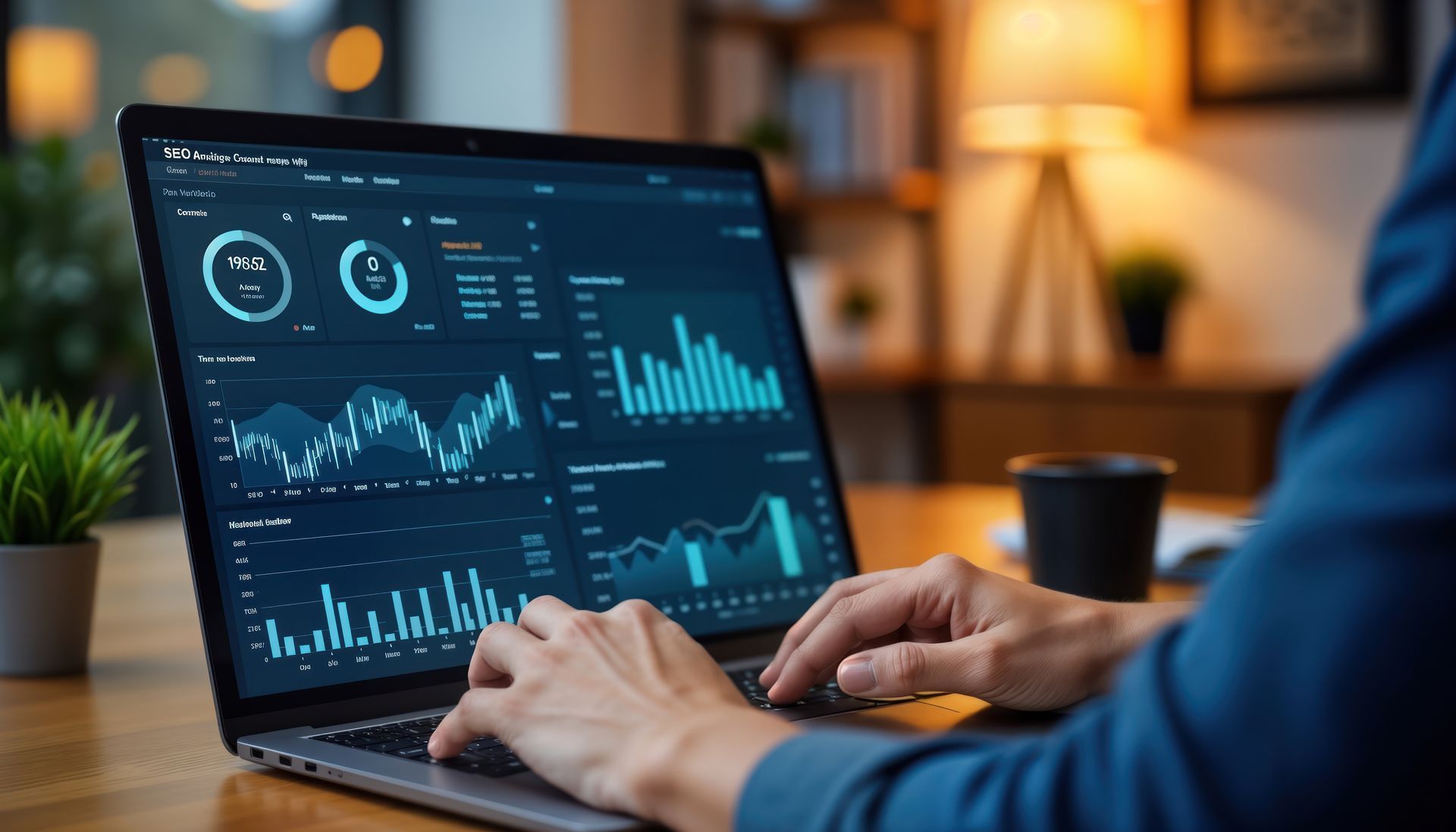The Ultimate Guide to Mastering the Marketing Funnel: Boost Your Sales and Skyrocket Your Business Success
The Ultimate Guide to Mastering the Marketing Funnel: Boost Your Sales and Skyrocket Your Business Success
Are you struggling to generate consistent sales and grow your business? Look no further than the marketing funnel. The marketing funnel is a proven strategy that can help you boost your sales and skyrocket your business success. In this ultimate guide, we will take you through the step-by-step process of mastering the marketing funnel.
From creating awareness with top-of-funnel content to nurturing leads in the middle-of-funnel and converting them into customers at the bottom-of-funnel, we will cover it all. With expert tips and actionable insights, you will learn how to effectively attract, engage, and convert your target audience at each stage of the funnel.
Whether you're an aspiring entrepreneur or an experienced marketer, this guide is a must-read. We will demystify the complexities of the marketing funnel and provide you with the knowledge and tools you need to take your sales and business growth to the next level.
Don't miss out on this opportunity to unlock the potential of your marketing efforts. Get ready to master the marketing funnel and watch your sales soar.
Understanding the different stages of the marketing funnel
The marketing funnel is a visual representation of the customer journey, from the moment they become aware of your brand to the point of making a purchase. It consists of three key stages: top of the funnel, middle of the funnel, and bottom of the funnel. Each stage plays a crucial role in guiding your potential customers towards making a purchase decision.
Top of the funnel: Attracting potential customers
At the top of the funnel, the goal is to create awareness and attract potential customers. This is where you cast a wide net and reach out to a broader audience. Your focus should be on capturing the attention of your target market and getting them interested in your products or services.
To effectively attract potential customers, you need to create compelling and relevant content. This can include blog posts, social media updates, videos, podcasts, and more. The key is to provide value and address the pain points and challenges of your target audience.
Additionally, leveraging search engine optimisation (SEO) techniques can help improve your visibility and reach. By optimising your website and content for relevant keywords, you can increase your chances of appearing in search engine results and driving organic traffic to your website.
Middle of the funnel: Engaging and nurturing leads
Once you have attracted potential customers to your brand, it's time to engage and nurture them. The middle of the funnel is all about building a relationship with your leads and earning their trust. This is where you provide them with more in-depth information and resources that align with their interests and needs.
One effective way to engage and nurture leads is through email marketing. By capturing their email addresses through lead magnets or opt-in forms, you can send targeted and personalised emails that provide valuable content, exclusive offers, and updates about your products or services.
Another strategy is to leverage social media platforms to engage with your leads. By consistently sharing valuable content, responding to comments and messages, and participating in relevant discussions, you can build a community around your brand and establish yourself as an authority in your industry.
Bottom of the funnel: Converting leads into customers
The bottom of the funnel is where the magic happens – it's where you convert your leads into paying customers. At this stage, your potential customers have already shown interest in your brand and have engaged with your content. Now, it's time to guide them towards making a purchase decision.
One effective strategy is to offer a compelling call-to-action (CTA) that encourages your leads to take the next step. This could be a limited-time discount, a free trial, or a consultation call. The key is to provide value and remove any barriers or objections that may prevent them from making a purchase.
Additionally, implementing retargeting campaigns can be highly effective at this stage. By using cookies to track your leads' browsing behaviour, you can display targeted ads to remind them of your brand and encourage them to revisit your website and make a purchase.
Strategies and tactics for each stage of the marketing funnel
To effectively master the marketing funnel, you need to employ the right strategies and tactics at each stage. Let's dive deeper into some proven approaches that can help you maximise your results.
Top of the funnel strategies and tactics
· Content marketing: Creating high-quality and relevant content that addresses the pain points and challenges of your target audience is key to attracting potential customers. This can include blog posts, videos, podcasts, infographics, and more.
· Search engine optimisation (SEO): Optimising your website and content for relevant keywords can help improve your visibility and drive organic traffic to your website. Focus on keyword research, on-page optimisation, and building high-quality backlinks.
· Social media marketing: Leveraging popular social media platforms like Facebook, Instagram, Twitter, and LinkedIn can help you reach a wider audience and engage with potential customers. Develop a consistent posting schedule and create shareable content.
Middle of the funnel strategies and tactics
· Email marketing: Capturing leads' email addresses and sending targeted and personalised emails can help you nurture and build relationships with potential customers. Create enticing lead magnets, segment your email list, and deliver valuable content regularly.
· Social media engagement: Actively engage with your leads on social media by responding to comments and messages, participating in relevant discussions, and sharing valuable content. This helps build trust and establish your brand as an authority in your industry.
· Lead scoring and segmentation: Implement lead scoring techniques to prioritise and segment your leads based on their level of engagement and interest. This allows you to tailor your marketing efforts based on their specific needs and preferences.
Bottom of the funnel strategies and tactics
· Compelling CTAs: Offer compelling and irresistible CTAs that prompt your leads to take the next step, such as making a purchase, signing up for a free trial, or scheduling a consultation call. Clearly communicate the value they will receive by taking action.
· Retargeting campaigns: Implement retargeting campaigns to remind your leads of your brand and encourage them to revisit your website. Display targeted ads based on their browsing behaviour to increase the chances of conversion.
· Customer testimonials and reviews: Showcase positive testimonials and reviews from satisfied customers to build social proof and alleviate any doubts or concerns your leads may have. Testimonials can be displayed on your website, social media profiles, and marketing materials.
-
Key metrics to track and measure success
To effectively gauge the performance of your marketing funnel, it's important to track and measure key metrics. These metrics provide insights into how well your strategies and tactics are working and can help you identify areas for improvement. Here are some essential metrics to consider:
• Website traffic: Measure the number of visitors to your website and track how it changes over time. This can help you assess the effectiveness of your top-of-funnel strategies like content marketing and SEO.
• Conversion rate: Calculate the percentage of leads that convert into customers. This metric helps you evaluate the effectiveness of your bottom-of-funnel strategies and identify any bottlenecks or areas for improvement.
• Email open and click-through rates: Monitor how many of your leads open your emails and click on the links within them. This indicates the engagement level of your leads and the effectiveness of your middle-of-funnel strategies like email marketing.
• Customer acquisition cost (CAC): Calculate the average cost of acquiring a new customer. This metric helps you understand how much you're spending to acquire each customer and assess the profitability of your marketing efforts.
• Customer lifetime value (CLV): Determine the average revenue generated by each customer over their lifetime. This metric helps you understand the long-term value of your customers and identify opportunities for upselling and retention.
-
Tools and technologies to optimise your marketing funnel
With the advancement of technology, there are numerous tools and technologies available to help you optimise your marketing funnel. These tools automate and streamline various aspects of your marketing efforts, saving you time and enabling you to focus on what matters most – growing your business. Here are some essential tools and technologies to consider:
• Customer Relationship Management (CRM) software: CRM software helps you manage and track your customer interactions, leads, and sales pipeline. It allows you to segment your leads, automate email marketing, and gain valuable insights into your customers' behaviour.
• Marketing automation software: Marketing automation software enables you to automate repetitive marketing tasks, such as email campaigns, lead nurturing, and social media scheduling. It helps you deliver the right message to the right audience at the right time.
• Analytics tools: Analytics tools like Google Analytics provide valuable insights into your website's performance, user behaviour, and conversion rates. These tools help you track the effectiveness of your marketing strategies and make data-driven decisions.
• A/B testing tools: A/B testing tools allow you to test different variations of your marketing campaigns and landing pages to determine which one performs better. This helps you optimise your messaging, design, and calls-to-action for maximum impact.
• Customer feedback tools: Customer feedback tools enable you to collect feedback and reviews from your customers, helping you understand their needs and preferences better. This information can guide your marketing efforts and improve your overall customer experience.
-
Case studies of successful marketing funnel implementations
To further illustrate the power of a well-optimised marketing funnel, let's take a look at some real-world case studies of businesses that have achieved remarkable success through their funnel strategies.
Case Study 1: Company A – E-commerce Business
Company A is an e-commerce business that sells high-end fashion accessories. By implementing a comprehensive marketing funnel, they were able to significantly increase their sales and customer retention.
• Top of the funnel: Company A created engaging and informative blog posts, videos, and social media content that showcased the latest fashion trends and provided styling tips. They leveraged SEO techniques to improve their organic visibility and attract a larger audience.
• Middle of the funnel: Company A captured leads' email addresses through a lead magnet offering a free style guide. They then nurtured these leads through personalised email campaigns that included exclusive discounts, styling tips, and customer success stories.
• Bottom of the funnel: Company A offered a limited-time discount to leads who had shown high engagement and interest. They also implemented retargeting campaigns to remind potential customers of their brand and incentivise them to make a purchase.
Through their marketing funnel efforts, Company A saw a 40% increase in website traffic, a 25% increase in conversion rate, and a 30% increase in customer retention.
Case Study 2: Company B – B2B SaaS Startup
Company B is a B2B SaaS startup that provides project management software to small and medium-sized businesses. By implementing a targeted marketing funnel, they were able to generate qualified leads and close more deals.
• Top of the funnel: Company B created in-depth blog posts and case studies that addressed the pain points and challenges faced by their target audience. They also leveraged social media platforms like LinkedIn to share valuable content and engage with potential customers.
• Middle of the funnel: Company B captured leads' email addresses through a webinar registration form and delivered a value-packed webinar that showcased the benefits of their software. They followed up with personalised email campaigns that included free trials and consultations.
• Bottom of the funnel: Company B offered a limited-time discount to leads who had completed a free trial and demonstrated high engagement. They also provided a dedicated account manager to guide potential customers through the onboarding process.
Through their marketing funnel efforts, Company B saw a 30% increase in qualified leads, a 20% increase in conversion rate, and a 15% increase in customer lifetime value.

Conclusion: Taking your business to the next level with a well-optimised marketing funnel
In today's competitive business landscape, mastering the marketing funnel is essential for driving consistent sales and achieving business growth. By understanding the different stages of the funnel and implementing the right strategies and tactics, you can attract, engage, and convert your target audience with precision.
Remember to track and measure key metrics to assess the effectiveness of your marketing efforts and leverage tools and technologies to optimise your funnel. By continuously refining your approach and learning from successful case studies, you can take your business to new heights and enjoy long-term success.
Don't let your sales and business growth suffer. Start mastering the marketing funnel today and unlock the true potential of your marketing efforts. With dedication, creativity, and a customer-centric approach, you can boost your sales and skyrocket your business success.
 Rating
Rating

Let's have a coffee
We’d love to hear from you! Just choose the most convenient method and we’ll get back to you as soon as we can.
Tel: 01244 629 523
Email: hello@H10marketing.co.uk
© Copyright 2024 H10 Marketing Ltd. All Rights Reserved.
Company Registration No: 11030469. VAT No. 427333211. Registered Office: Attention: Sarah Hawkins, 1 Old Marsh Farm Barns Business Centre, Old Marsh Farm Road, Sealand, Deeside, Flintshire, CH5 2LY, United Kingdom.












